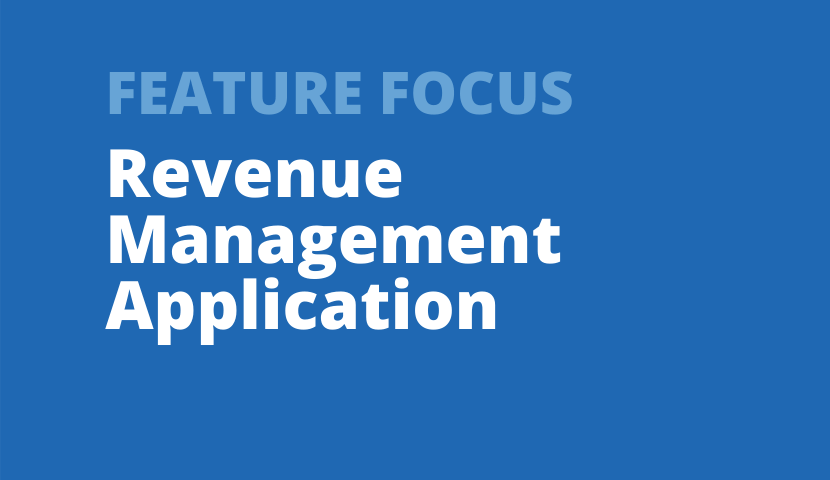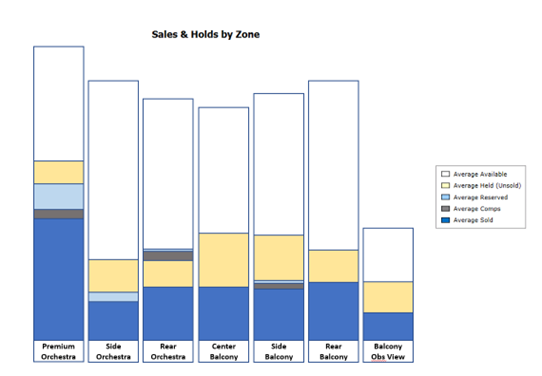RMA Feature Focus: Dynamic Pricing—Keeping Range and Relationship in Mind

Andrew Moreau
Manager, Professional Services
The RMA is an effective tool to monitor sales and to visualize what seats are in the highest demand in your theater. Many organizations have a process in place to implement Dynamic Pricing changes based on this analysis and continue to benefit from the incremental revenue made from increasing ticket prices. In this blog post, we will discuss the importance of maintaining a consistent range and relationship in your pricing throughout the course of your sales cycle.
What is Range and Relationship?
Pricing is generally set so that there is a range of choices for your potential audience, offering both premium and value experiences for a given performance. Ticket buyers are able to make a decision based on their perceived value and individual willingness to pay. Keeping a consistent relationship (or % change) between prices is important to guide the buyer in their selection, as ticket buyers judge their price options by comparing them against each other.
The price range below, for example, has an inconsistent relationship between pricing sections. When a potential audience member who has moderate price sensitivity looks at these options, they would likely purchase a ticket at a price lower than what they might be willing to pay. Notice the 100% leap in price between the Center Balcony and Rear Orchestra section. If the customer might be willing to pay in the $70-$90 range for a ticket, but only see these two options, they would likely purchase Center Balcony tickets which leaves money on the table.

The corrected price range below maintains the pricing range of $25-$150, but now there is a more consistent relationship between pricing tiers. This table is a helpful tool to use when making price changes, keeping the percent increases per pricing tier relatively consistent. While customers generally do not do this math when making a purchasing decision (of course we can all think of that one subscriber who does), keeping consistent percent increases helps avoid noticeable leaps in the relationship per pricing tier.

Range and Relationship in Action
So now let’s say that you have identified a particular performance that is selling ahead of the others in a production run, and in particular the Premium Orchestra seats are moving quicker than expected, as shown in the Sales & Holds by Zone RMA Report below. This is great! It sounds like this section within the performance is an ideal candidate on which to implement Dynamic Pricing. The question now is how much to change the ticket price. It may be a natural impulse to focus only on this one section, but—keeping in mind the powerful comparison message that the pricing options convey to our potential audience—we will want to keep all pricing tiers in mind when making a change.

Consider the example below of a dynamic increase to this performance’s prices. Since premium tickets are selling the quickest, there is likely price insensitivity, and so the top price is raised significantly by $9. From there, incremental pricing increases below the premium price help maintain a consistent relationship between the tiers. In addition, we kept the bottom two prices the same since organizations often wish to keep a consistent starting price to be welcoming to potential ticket buyers and not lose ticket sales to the most price sensitive portion of the audience.

Alternative Use of Range and Relationship
In general, keeping a consistent increase between pricing tiers is recommended; however, we can also use the relationship between prices as an inventory management tool. Let’s say in the above Dynamic Pricing example that the Premium Orchestra section was almost sold out and the remainder of the sections were relatively unsold. In this scenario, we might consider making a significant price increase to the top section to make a large leap in price comparison between the Premium and Side Orchestra sections to help move tickets in the lower price levels.
Conclusion
In summary, we as consumers make choices every day based on our perceived values. When we present our audience with a range of price choices for performance tickets, we are setting the basis for their value judgment by offering a comparison. Effective range and relationship is a powerful, guiding tool within our sales toolkit!
Of course every organization’s pricing structure and audience are unique. JCA Arts Marketing works with many performing arts organizations to reach their revenue goals, and we would love to learn more about your current pricing strategies. Please contact us if you are interested in learning more pricing theories, and how best to apply them to your organization.

